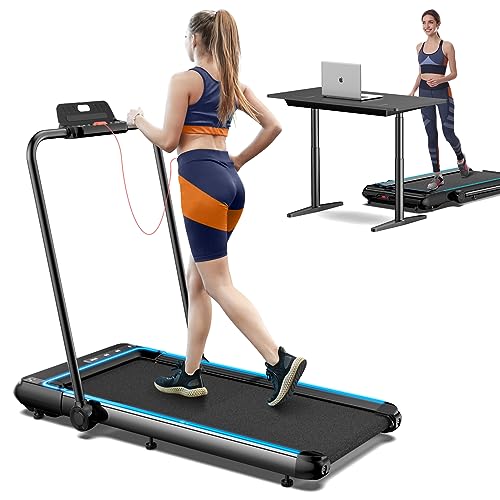Treadmills: A Comprehensive Guide to Understanding Their Functionality, Benefits, and Appropriate Selection
Introduction
Treadmills have ended up being a staple in modern-day physical fitness regimens, both in homes and gyms worldwide. They use a convenient and effective way to maintain cardiovascular health, increase endurance, and assist in weight management. This post checks out the different kinds of treadmills, their benefits, features to consider when purchasing, and some FAQs to assist users in making informed decisions.
Kinds of Treadmills
When it concerns choosing a treadmill, it is important to understand the different types readily available in the market. Here are the primary categories:
1. Manual Treadmills
- Mechanism: These treadmills have a basic style and rely on the user's efforts to move the belt.
- Pros: More economical, quieter operation, no electrical power needed.
- Cons: Limited features, might not provide the exact same series of workout strength.
2. Motorized Treadmills
- System: Powered by a motor that drives the belt, enabling users to walk or run at a set pace.
- Pros: Greater variety of speeds and inclines, equipped with many features such as heart rate screens and workout programs.
- Cons: More expensive and might require more maintenance.
3. Folding Treadmills
- Mechanism: Designed for those with restricted area, these treadmills can be folded for simple storage.
- Pros: Space-saving, frequently motorized, flexible functions.
- Cons: May be less resilient than non-folding designs.
4. Business Treadmills
- System: High-quality machines developed for use in health clubs and physical fitness centers.
- Pros: Built to endure heavy use, advanced features, often include guarantees.
- Cons: Pricey and not perfect for home use due to size.
5. Curved Treadmills
- Mechanism: A special style that allows users to propel the belt using their own energy.
- Pros: Offers a more natural running experience, promotes much better running type.
- Cons: More expensive and can be noisier.
| Treadmill Type | Pros | Cons |
|---|---|---|
| Handbook | Inexpensive, no electrical energy needed | Minimal functions |
| Motorized | Variety of speeds, advanced features | Upkeep required |
| Folding | Space-saving, typically motorized | May do not have durability |
| Commercial | Built to last, professional-grade functions | Pricey |
| Curved | Natural running experience, promotes great kind | Higher cost |
Advantages of Using Treadmills
Treadmills use numerous benefits that can add to one's overall health and wellness goals. A few of these benefits include:
- Convenient Workouts: Treadmills enable users to exercise inside regardless of climate condition.
- Cardiovascular Health: Regular usage can enhance heart health by increasing endurance and promoting healthy flow.
- Weight Management: Effective for burning calories, which helps in weight loss and management.
- Personalized Workouts: Users can control speed, incline, and period to produce customized exercise experiences.
- Security: Treadmills offer a predictable surface, decreasing the threat of falls compared to outside running.
- Multifunctional: Many treadmills come with functions like heart rate monitors, exercise programs, and even home entertainment systems.
Selecting the Right Treadmill
When selecting a treadmill, potential buyers should think about numerous crucial aspects:
Features to Consider:
- Motor Power: Typically measured in horse power (HP), a motor strength of at least 2.5 HP is suggested for severe runners.
- Belt Size: A longer and broader belt accommodates different stride lengths, offering comfort throughout exercises.
- Incline Settings: Adjustable incline features replicate outside hill running and can increase exercise strength.
- Weight Capacity: Ensure the treadmill can support the user's weight for safety and longevity.
- Console Features: Look for user-friendly control panels, exercise programs, and Bluetooth compatibility for streaming music or other functions.
Budget Considerations
- Under ₤ 500: Entry-level manual treadmills appropriate for casual walkers.
- ₤ 500 - ₤ 1,500: Mid-range motorized treadmills that use more features and much better toughness.
- ₤ 1,500 - ₤ 3,000: High-end models with innovative technology, larger motors, and longer guarantees.
- Over ₤ 3,000: Commercial-grade treadmills perfect for frequent use in health clubs or training centers.
Regularly Asked Questions (FAQs)
1. How often should I utilize a treadmill?
It is suggested to utilize a treadmill at least 3 to 5 times a week, including various strength levels for best outcomes.
2. Can I lose weight by utilizing a treadmill?
Yes, constant use of a treadmill can add to weight loss, specifically when combined with a balanced diet plan and strength training.
3. What is the best speed to stroll on a treadmill for beginners?
A speed of 3 to 4 miles per hour is an ideal variety for novices. It's necessary to begin slow and gradually increase pace as comfort and endurance enhance.
4. Do I require to utilize a treadmill if I already run outdoors?
Using a treadmill can offer fringe benefits, such as regulated environments and differed workouts (slope, intervals) that are not constantly possible outdoors.
5. How do I preserve my treadmill?
Regular maintenance consists of oiling the belt, cleaning up the deck and console, and checking the motor for optimum performance.
Treadmills are vital tools for those wanting to enhance their fitness levels in a regulated and hassle-free way. With different types available, comprehending their functions and benefits is crucial for making an informed purchase. By thinking about Walking Machine , space accessibility, and budget constraints, individuals can find the most appropriate treadmill that fits their lifestyle. Incorporating treadmill workouts into a well balanced fitness regimen can lead to better health outcomes and an enjoyable exercise experience.

